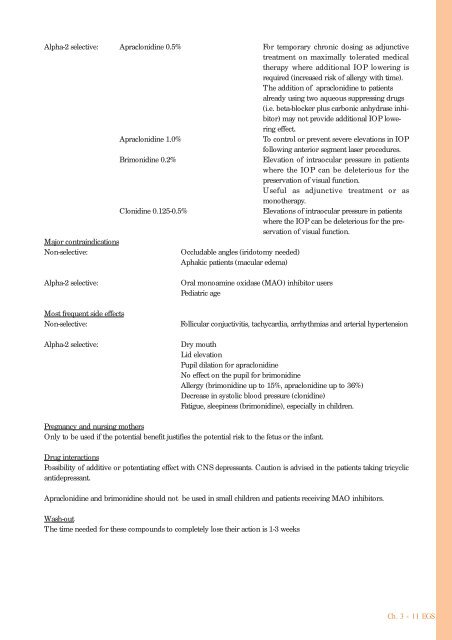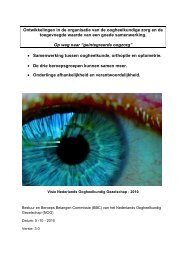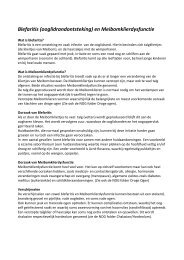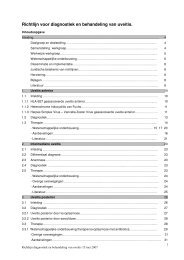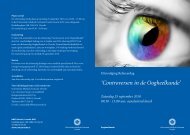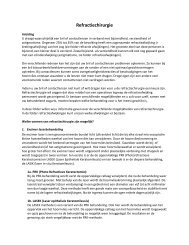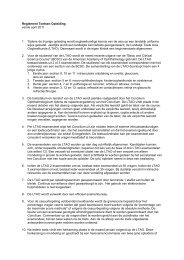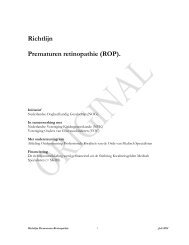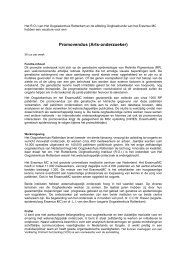terminology and guidelines for glaucoma ii - Kwaliteitskoepel
terminology and guidelines for glaucoma ii - Kwaliteitskoepel
terminology and guidelines for glaucoma ii - Kwaliteitskoepel
You also want an ePaper? Increase the reach of your titles
YUMPU automatically turns print PDFs into web optimized ePapers that Google loves.
Alpha-2 selective: Apraclonidine 0.5% For temporary chronic dosing as adjunctive<br />
treatment on maximally tolerated medical<br />
therapy where additional IOP lowering is<br />
required (increased risk of allergy with time).<br />
The addition of apraclonidine to patients<br />
already using two aqueous suppressing drugs<br />
(i.e. beta-blocker plus carbonic anhydrase inhibitor)<br />
may not provide additional IOP lowering<br />
effect.<br />
Apraclonidine 1.0%<br />
To control or prevent severe elevations in IOP<br />
following anterior segment laser procedures.<br />
Brimonidine 0.2%<br />
Elevation of intraocular pressure in patients<br />
where the IOP can be deleterious <strong>for</strong> the<br />
preservation of visual function.<br />
Useful as adjunctive treatment or as<br />
monotherapy.<br />
Clonidine 0.125-0.5%<br />
Elevations of intraocular pressure in patients<br />
where the IOP can be deleterious <strong>for</strong> the preservation<br />
of visual function.<br />
Major contraindications<br />
Non-selective:<br />
Occludable angles (iridotomy needed)<br />
Aphakic patients (macular edema)<br />
Alpha-2 selective:<br />
Most frequent side effects<br />
Non-selective:<br />
Alpha-2 selective:<br />
Oral monoamine oxidase (MAO) inhibitor users<br />
Pediatric age<br />
Follicular conjuctivitis, tachycardia, arrhythmias <strong>and</strong> arterial hypertension<br />
Dry mouth<br />
Lid elevation<br />
Pupil dilation <strong>for</strong> apraclonidine<br />
No effect on the pupil <strong>for</strong> brimonidine<br />
Allergy (brimonidine up to 15%, apraclonidine up to 36%)<br />
Decrease in systolic blood pressure (clonidine)<br />
Fatigue, sleepiness (brimonidine), especially in children.<br />
Pregnancy <strong>and</strong> nursing mothers<br />
Only to be used if the potential benefit justifies the potential risk to the fetus or the infant.<br />
Drug interactions<br />
Possibility of additive or potentiating effect with CNS depressants. Caution is advised in the patients taking tricyclic<br />
antidepressant.<br />
Apraclonidine <strong>and</strong> brimonidine should not be used in small children <strong>and</strong> patients receiving MAO inhibitors.<br />
Wash-out<br />
The time needed <strong>for</strong> these compounds to completely lose their action is 1-3 weeks<br />
Ch. 3 - 11 EGS


